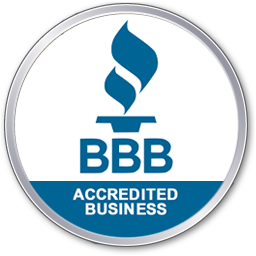If you’re sick and tired of dealing with the mess and costs that come with traditional sewer repair methods, you need to know about this game-changing solution—trenchless sewer repair.
But what is that? How does trenchless sewer repair work, and what makes it such an innovative alternative?
Join us as we explore trenchless sewer repair techniques, address some common questions, and unravel the mystery behind this approach.
Steps Involved in Trenchless Sewer Repair
At its core, trenchless sewer repair is a modern alternative to conventional repair techniques. Traditional sewer repair work often requires extensive excavation, which can disrupt your property and end up being fairly costly.
On the other hand, trenchless repair is designed to significantly reduce that disruption and be more cost-effecting in the long run. The process involves several well-orchestrated steps to ensure the success of the repair.
Step 1: Camera Inspection
Before any repair work can begin, it’s important to understand what caused the sewer issue and its extent. A specially designed video camera is used to perform a camera inspection that’s inserted into the access hole and navigated down the sewer system.
The high-res camera allows the technician to visually inspect the inside of the pipe, pinpointing the location of the issue and severity of damage.
The inspection also helps the technician determine the most suitable plan to repair the problem.
Step 2: Cleaning
The next step is to clean the line of any debris and obstructions that may hinder the repair process. In most cases, a high-pressure water system is used to assist in the cleaning process.
Step 3: Repair
Based on the camera inspection and cleaning results, the technician will then determine the repair method — pipe bursting is the preferred repair method at Alpha Environmental due to several factors, such as:
- Type of damage
- The extent of the damage
- Pipe material
- Pipe size
- Soil conditions surrounding the area that’s damaged
Step 4: Post-Repair Inspection
Once the repair is complete, a final camera inspection is performed to ensure the repair was successful. The camera inspection confirms that the new pipe or resin was correctly installed and that the pipe has no leaks or other issues.
This step is crucial in providing peace of mind to the property owner and technician, knowing that the repair was done correctly and was successful.
Different Trenchless Repair Techniques
As you will soon discover, trenchless sewer repair has revolutionized the way damaged sewer lines are repaired. It offers much less invasive techniques and ends up being a more cost-effective alternative to traditional sewer repair methods.
The two primary techniques used are cured-in-place pipe (CIPP) lining and pipe bursting. Each method has its advantages and limitations, making them more suitable for their own specific situations.
Cured-In-Place Pipe (CIPP) Lining
CIPP lining is a commonly used technique to repair sewer pipes with minor or moderate damage. Oftentimes, this is damage like leaks, slight corrosion, and small cracks.
This method involves using a resin-coated liner to create a new pipe within the existing one. This is an effective and popular method because it has a minimal impact on the surrounding environment and can be completed within a day.
- Preparation. The first step is always the same. Before the CIPP process begins, the pipe is cleaned using high-pressure water to remove all debris and obstructions. This helps ensure that the surface is smooth enough for the liner to adhere to.
- Liner insertion. Next, a flexible, resin-coated liner is inserted into the pipe using air or water pressure or by being pulled through with a cable. The liner is generally made from felt-like material that can be impregnated with thermosetting resin, such as polyester or epoxy.
- Curing. Once the liner is in place, it’s inflated, pressing the resin against the damaged area along the pipe’s interior. The resin is then given some time to cure to essentially form a new pipe within the existing one.
- Final inspection. As always, the final step is to perform a final camera inspection to ensure the repair was done correctly and is free from any other issues. The main purpose is to ensure that the original problem is resolved.
Pipe Bursting
Unlike CIPP lining, pipe bursting is commonly used to repair severely damaged or collapsed pipes. This is because this method is more invasive as it involves breaking the old pipe while simultaneously pulling a new high-density polyethylene pipe into place.
- Excavating access holes. This method involves excavating two access holes at either end of the damaged pipe. These holes allow the pipe-bursting equipment to be inserted and removed.
- Insertion. Once the two access holes are excavated, a powerful, cone-shaped bursting head is attached to a cable and pulled through the other end of the damaged pipe. The bursting head is designed to break apart the old pipe as it’s pulled through.
- New pipe installation. As the bursting head is pulled through, a brand-new high-density polyethylene pipe is pulled into place, replacing the damaged portion.
- Final inspection. Finally, once the new pipe is installed, a final camera inspection is conducted to ensure that the installation was done correctly and that the original problem is resolved.
Common Questions About Trenchless Sewer Repair
Trenchless sewer repair has become a popular solution for property owners dealing with damaged sewer lines. However, there are still many people that rightfully have questions about this revolutionary method.
In this section, we’ll cover some of the most common questions about this innovative sewer repair work and provide answers to help you better understand both the benefits and limitations of this approach.
Question 1 What’s the Lifespan of a Trenchless Sewer Repair?
Trenchless sewer repair was designed to be long-lasting. For example, CIPP lining has been estimated to have a lifespan between 50 to 60 years.
However, the actual lifespan of the repair will depend on a range of factors, such as the material quality, installation process, and the repair method itself.
Additionally, routine maintenance and inspections will help extend the repaired sewer line’s lifespan.
Question 2 Are There Any Potential Issues With Trenchless Repair Techniques?
As innovative and revolutionary as trenchless sewer repair work is, there are some potential concerns to be aware of:
- Reduced diameter. The new pipe installed may have a slightly smaller diameter than the damaged pipe. Although the size difference is typically a non-issue, it may rarely impact the flow capacity. Additionally, the smooth interior surface often compensates for the reduced diameter.
- Incompatible materials. The second potential issue is incompatible materials. Not all pipes use materials suitable for trenchless repair techniques. The most accurate way is to work with a professional plumber to determine the most appropriate plan of action.
- Installation complications. Lastly, using low-quality materials or if the new pipe is improperly installed, you may face problems later on. That’s why it’s vital to work with a reputable and experienced plumbing service to minimize risks across the board.
Question 3 How Does the Cost Compare to Traditional Methods?
The answer depends on how you view the cost. In most cases, the upfront cost of trenchless repair can be higher than traditional repair methods. However, trenchless sewer repair tends to prove more cost-effective in the long term.
This is because traditional sewer repair work involves extensive excavation, which can damage a large portion of your property and require costly landscaping repairs.
Trenchless sewer repair techniques are designed to be as minimally invasive as possible, reducing the overall cost. Additionally, trenchless repairs come with a longer estimated lifespan, which means fewer repairs over time.
Question 4 How Long Does the Trenchless Sewer Repair Process Take?
The total duration of the repair will depend on the method used and the extent of the damage. Fortunately, many cases can be completed within a couple of days, significantly quicker than any other traditional method.
This drastically reduced downtime is one of the main benefits of going with trenchless sewer repair.
Importance of Hiring a Professional Plumbing Service
If you’re dealing with a damaged sewer line, rely on the expertise of our professional plumbers here at Alpha Environmental. Our plumbing experts have the specialized knowledge, equipment, and experience you need to ensure a successful repair.
By working with a professional plumbing service, you get the peace of mind of knowing your trenchless sewer repair will be completed correctly and efficiently. You not only save time and money, but you also know that your sewer system’s integrity is maintained for decades to come.
Contact us today to schedule your trenchless sewer repair or to answer any questions you may have.




